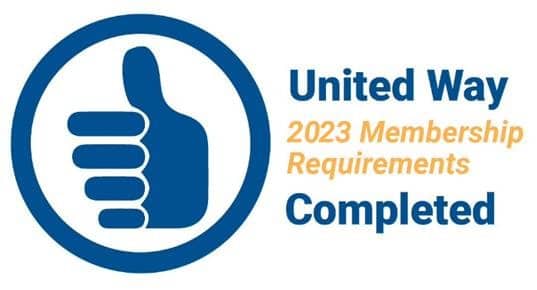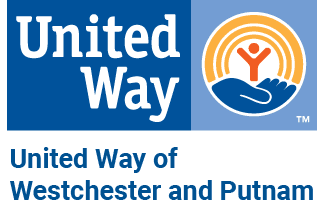LGBTQ+ Social Justice Journey Day 4: History and Today

LGBTQ+ history is full of countless examples of violence, brutality, and discrimination. Even today, LGBTQ+ history and people are being erased and censored. This erasure has led to parts of queer history being lost, and stories only being half told. Incredibly, we also see countless examples of strength, perseverance, and many reasons for hope.
LGBTQ+ movements across America are full of trans/queer people of color (POC). Much of the success of the LGBTQ+ community is owed to them. Even today, these members of the LGBTQ+ community are often silenced. Below are some preliminary resources on some LGBTQ+ POC who paved the way for change within the community.
These materials will also help answer some common questions like, “Why do we have pride and why is it important?” (Hint: it wasn’t always just a fun celebration; it was a protest). “Where and how did pride start?” “Were LGBTQ+ individuals really fired from their jobs?” (Yes, thousands).
As you look through some of the material provided this week and beyond, it is important to remember that these events didn’t happen in a vacuum and inform each other.
Legal Protection for LGBTQ+ Individuals
LGBTQ+ Americans still do not have equal protection under the law in our country. Discrimination, denial of services, and more are still legal across our nation. A study published in February 2022, shows that there could be more LGBTQ+ Americans than we previously thought. This study shows that a little over 7% of the American population identifies as LGBTQ+.
Here are just some of the discriminatory laws affecting those 20+ million Americans,
- 35 states still allow the use of the Gay/Trans Panic Defense. These defenses seek to partially or completely excuse crimes such as murder and assault on the grounds that the victim’s sexual orientation or gender identity is to blame for an attacker’s violent reaction upon learning that the victim is either gay or transgender.
- The Williams Institute shows that “no state recognizes gay and trans panic defenses as freestanding defenses under their respective penal codes,” but defendants have used panic defenses in conjunction with other defense strategies to attempt to reduce the severity of their charges or sentencing.
- 6 states have targeted religious exemptions that permit medical professionals to decline to serve LGBTQ+ clients.
- In 18 states it is legal to discriminate against LGBTQ+ people in housing.
- 21 states have no protections for LGBTQ+ people in public accommodations. Meaning they can be refused service, denied entry, or otherwise discriminated against in public places based on their sexual orientation or gender identity.
- 35 states do not have protections for LGBTQ+ people in credit and lending. This means they could be denied credit and lending services, opening a bank account, or taking out a loan, simply because they are LGBTQ+.
- 19 states have no explicit protections against discrimination in adoption based on sexual orientation or gender identity.
- 11 states permit state-licensed child welfare agencies to refuse to place and provide services to children and families, including LGBTQ+ people and same-sex couples if doing so conflicts with their religious beliefs.
- 18 states have no explicit protections against discrimination in foster care based on sexual orientation or gender identity.
- 11 states permit state-licensed child welfare agencies to refuse to place and provide services to children and families, including LGBTQ+ people and same-sex couples if doing so conflicts with their religious beliefs.
The above bullet points represent some current laws in the United States. From discrimination in housing, adoption, healthcare, public accommodations, education, banking, and beyond, LGBTQ+ Americans are second-class citizens in the eyes of the law. Even though a majority of Americans, regardless of where they live, their age, political alignment, or religious background, support non-discrimination laws.
States Legislatures
In 2021, there was a record-breaking 250+ anti-LGBTQ bills introduced in state legislatures (see the breakdown). Many of these bills/laws target transgender youth’s access to healthcare or attempt to prevent them from participating in sports. Wisconsin has introduced legislation against transgender athletes, and transgender healthcare. The introduced healthcare bill “allows district attorneys to prosecute doctors who ignore the ban and cuts public funding to facilities that offer the surgeries. Health insurers also would be banned from covering such procedures under the proposal.”
There are many claims that trans women have an unfair advantage in sports, but evidence suggests this is not true. Get the facts HERE and HERE. These bills/laws are extremely harmful. Take this quote from a Washington Post article,
“Prejudice, stigma, and discrimination against LGBT people raise the risks of depression, anxiety, suicidality, PTSD, and other forms of psychological distress. Discrimination is linked to health harms even for those who are not directly exposed to it because the presence of discrimination, stigma, prejudice, and fear of victimization create a hostile social climate that contributes to what researchers call “minority stress.” Even for the most resilient, exposure to discrimination — experiencing it or fearing it — is hurtful.” (read the full article here).
Targeting marginalized communities in sports is not a new idea. Take this snippet from Scientific American,
“It’s worth noting that this isn’t the first time people have tried to discredit the success of athletes from marginalized minorities based on half-baked claims of ‘science.’ There is a long history of similarly painting Black athletes as “genetically superior” in an attempt to downplay the effects of their hard work and training.”
Click through this interactive map to see all the laws affecting LGBTQ+ individuals in America. At the top of the page, hover over the “choose an issue,” menu item and explore the issues.
Watch
Reflect
Is there anything you learned this week that was shocking to you?
What barriers do you believe still exist that prevent full protections for LGBTQ+ individuals?
Are there ways you can help the LGBTQ+ community?
336 Central Park Avenue
White Plains, NY 10606
914.997.6700
Privacy Policy
Board Portal
Career Opportunities

